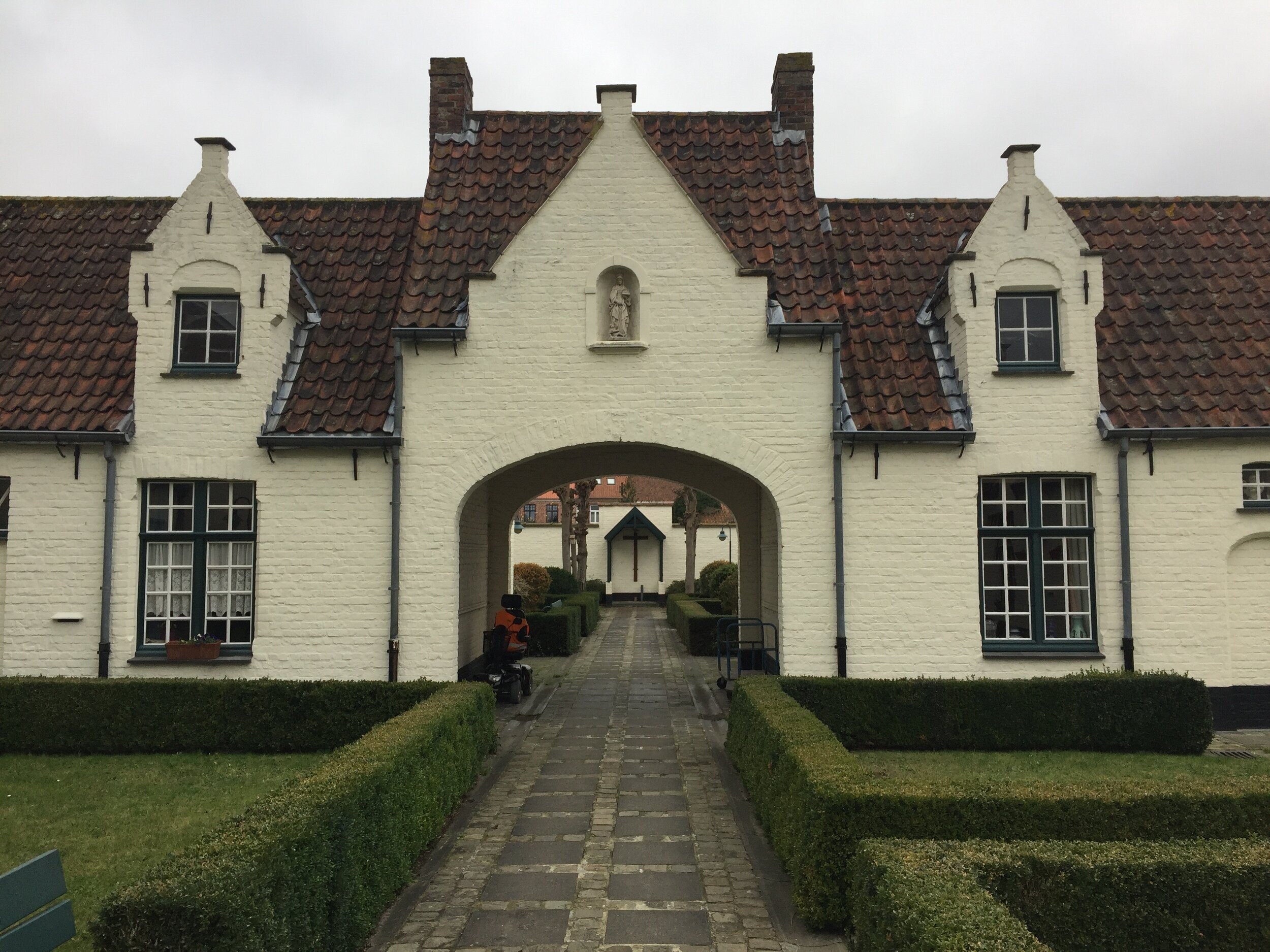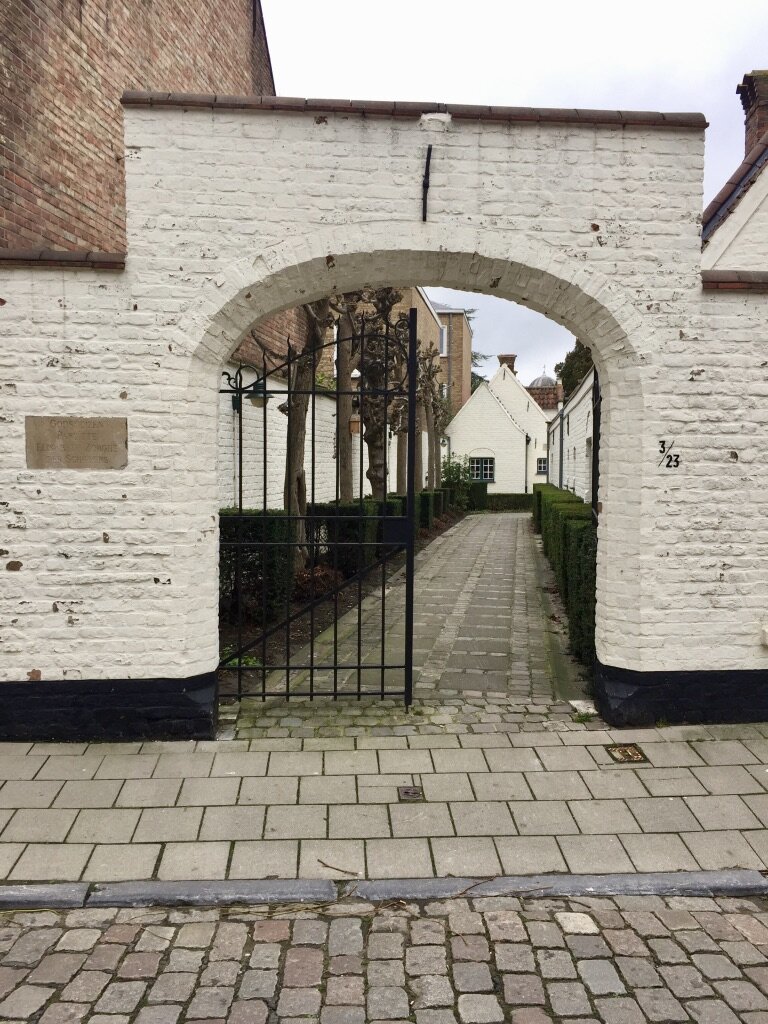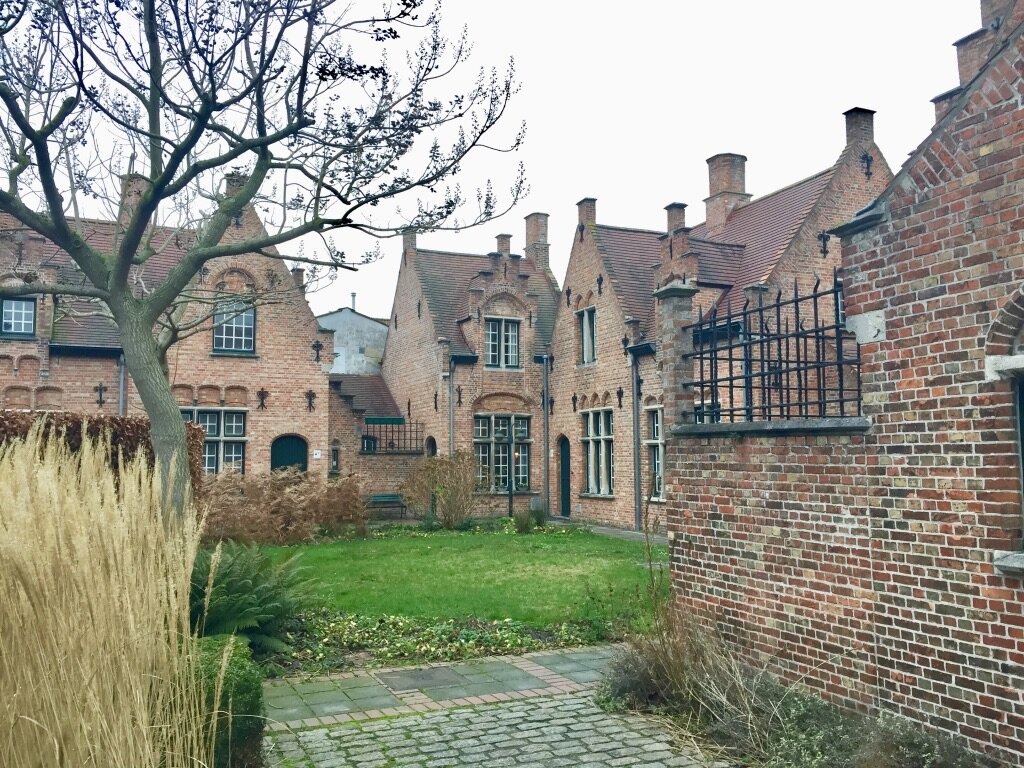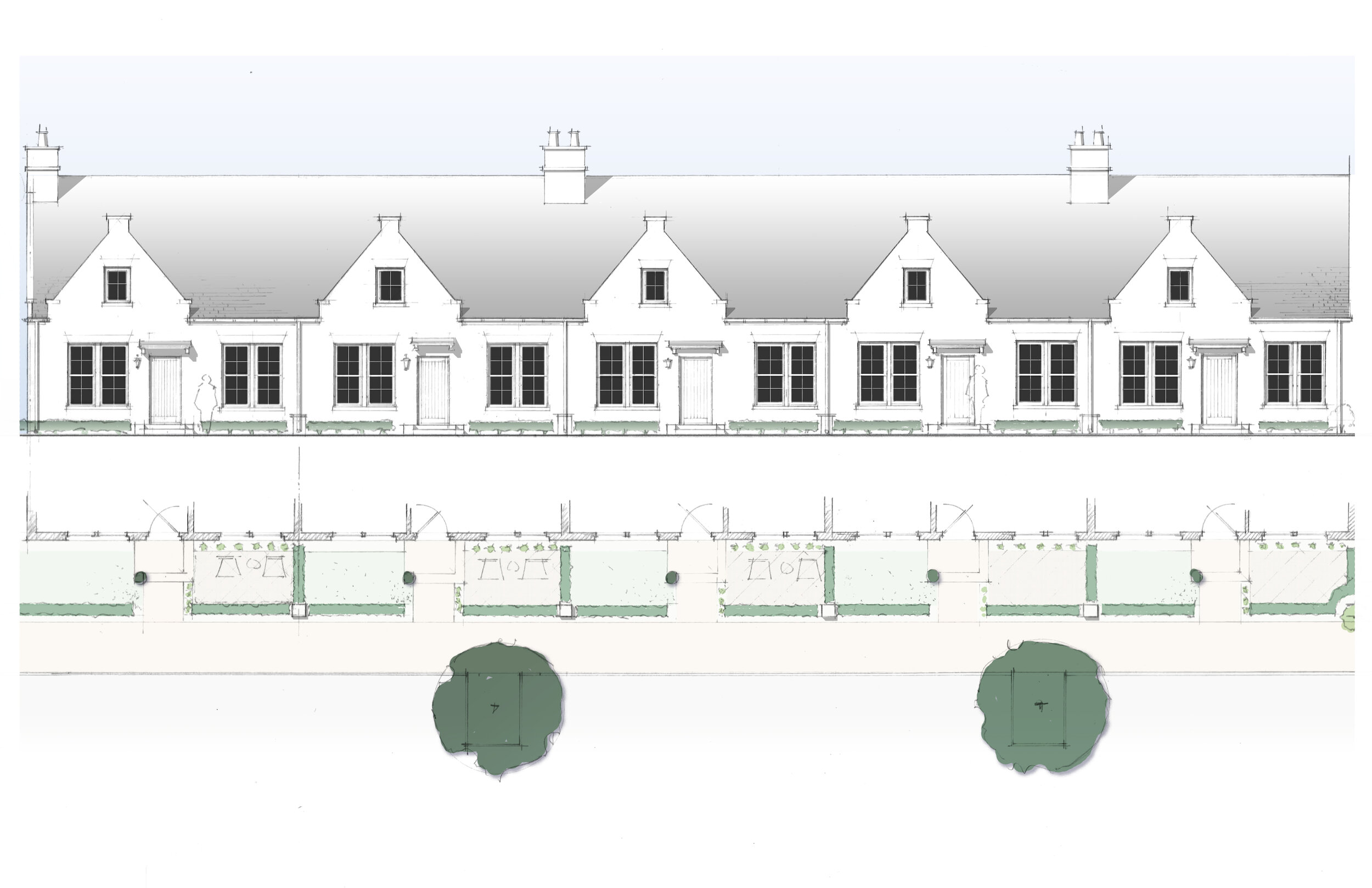From Our House to “Godshuis”
This article originally appeared in The Catholic World Report. It’s republished here with permission.
If the recent coronavirus pandemic has revealed anything to us, it should be how badly we house many of our elderly. But “house” is perhaps not the right term. Instead of “housing” them, we too often warehouse them.
Today, the elderly leave society when they enter an elderly facility, too often to be forgotten by the community. It is this separation perhaps more than any other single factor that contributes to the suffering of the elderly today. Dr. Bill Thomas writes that, “The three plagues of loneliness, helplessness, and boredom account for the bulk of suffering among our Elders.” His experience as a geriatrician had led him to recognize a truth that Mother Theresa had pointed out decades before. “The greatest disease in the West today is not TB or leprosy; it is being unwanted, unloved, and uncared for. We can cure physical diseases with medicine, but the only cure for loneliness, despair, and hopelessness is love. There are many in the world who are dying for a piece of bread but there are many more dying for a little love.”
Building a Home
Entrance to De Muelenaere from the street. Image source.
The environment in which one lives does not necessitate human well-being, but it plays a vital role in setting the stage for it. The environment we inhabit shapes the way we live our lives, from childhood through old age, and encourages or discourages how we interact and build community with those around us. Winston Churchill famously wrote, “We shape our buildings, thereafter they shape us.”
Human-shaped environments always express meaning. Cities’ architecture and homes reflect the values of a culture. In the final years of life, this becomes acutely clear. In those final years, as the physical and often mental capacity to function autonomously degrades, the environment in which one lives becomes ever more important in setting the stage for human flourishing or degradation.
Over the last decade, the medical practice of elderly care has come to recognize the importance of well-designed housing as foundational to the well-being of the elderly. Leading geriatrics doctors such as Dr. Bill Thomas have founded initiatives such as the Eden Alternative and the Green House Project which recognize that “human well-being” encompasses more than what is clinically measurable. These initiatives have brought a semblance of autonomy and a sense of “home” back to these elderly facilities. The concept of de-clinicalizing end-of-life care and understanding the need for elderly residents to have a home has become a driving vision for recent work in geriatrics and hospice care.
The concept of “home,” a place of repose, a place where we as persons belong and that reflects who we are as persons in communion with others, is one that has been diluted in our current culture. The average American moves every five years. We have become in some regards a nomadic culture. A sense of home and familiarity of place are given up for other more pressing values. As a culture, we take for granted that we will be able to find a place that we can make our own, even if only for a few years.
Despite our modern culture’s weak sense of home, home is an essential backdrop to human flourishing. The loss of home is perhaps felt hardest by the elderly. Studies have shown that dementia and depression rise drastically as persons move from the home that they know and control to an assisted living or nursing home residence that they don’t know and don’t control. It wasn’t always like this. Atul Gawande, physician and author of Being Mortal, writes that, “As recently as 1945, most deaths occurred in the home. By the 1980s, just 17 percent did.”
“Home” at the End of Life
What is it to have a “home” when we are in the final stages of life? What is it to create a home when one is facing death? The human person is caught between two worlds, the world of materiality, and the world of transcendent meaning. If we are to create a home in this world, it will be a dwelling that reflects this mysterious reality of the human condition. The philosopher Roger Scruton writes, “Through the pursuit of beauty, we shape the world as our home and come to understand our own nature as spiritual beings.”
Modern elderly living facilities like the one pictured here prioritize clinically measurable health. But this represents only half of the person. Physical health is a human good, but it is far from the only good we need to flourish. This building does not reflect the human need for beauty, community, and connection with the divine. It is not built to nourish the spiritual nature of the person any more than the strip malls and office parks that populate contemporary suburban sprawl. The building was likely designed by one of the same architects. It serves a “function,” and that function is largely commercial, not spiritual.
Development after about 1950 in America, no matter what the purpose or function, was built around the automobile. For those of us with cars, this offers significant opportunity and freedom. It fits a culture that puts less value in permanence and “home” and more on freedom of movement. However, for those who cannot afford car or who cannot drive, it is isolating and even dehumanizing.
Elderly care facilities are no different. The nursing home or assisted living segregates those that cannot operate or afford a car. And yet, like almost all elderly institutions, the building linked to above sits in a sea of asphalt connected to the rest of the world only by more asphalt. There is no walking anywhere from here.
The large building above includes many apartment-like rooms, many well-appointed. But they lack the individuality of a home; they are rooms of an institutional structure and do not provide easy access to the public realm. It is automobile-centered development for those who can’t drive—the conceptual equivalent of building a facility on an island for people who have no boats and can’t swim.
Aging is not a disease; it is a natural cycle of life. It is foolish to try to “cure” it by applying medical technology meant for those who are sick. Institutions patterned on the modern hospital, with all their technological gadgetry and necessary sterile environment, are not likely to meet the needs of those who are aging, but not in need of acute medical care.
Can we do better? Are there examples from history to which we might turn for help? We suggest there are, but they are largely invisible to those whose imaginations have been formed by the modern “techno-hospital.”
The “God’s-Houses” of Bruges
Godshuis de Croeser, Bruges (1912). Image by the author
Bruges, Belgium is perhaps the most well preserved medieval European city in existence today. Its location and importance were due to a tidal inlet that allowed it to serve as a hub of trade for Europe between the twelfth and fifteenth centuries. It became a wealthy city of merchant class citizens whose Christian values and ideals can still be seen, reflected in the streets, architecture, churches, shrines and, notably for this essay, their housing for the elderly poor, the godshuis or “god’s-house.”
Bruges is home to many inner-block residential courts known as godshuizen (god’s-houses), which were built and managed by trade guilds or wealthy philanthropists starting in the fourteenth century. They were built as almshouses to serve the poor elderly, widows and others in need. The development of charitable housing around a court was common in cities of Western Europe. In the Netherlands, this same model of charitable housing were known as Hofje houses. Residents were customarily given a weekly stipend and asked in return to pray for the souls of their benefactors.
Today, 45 of these “god’s-houses” still exist in Bruges. The earliest existing example dates from 1330 and is still in use today. In 1613, Johanna de Muelenaere founded the godshuis that is now known as “De Muelenaere.” Twenty-four small houses were built around a shared court to house elderly women in need. Until the French Revolution and the takeover of Bruges by Napoleon, these houses were cared for and managed by Johanna de Muelenaere’s heirs. Today it is managed by the city, and it still serves the elderly in need. The small brick houses block out any noise from the street, and the courtyard offers an almost startling sense of peace, though it is just a few steps from the street.
De Muelenaere, 1613. Image: Will Seath
“De Muelenaere” is built at the intersection of two streets; but the homes that make it up only have doors onto the shared court. To access the courtyard, one must walk through the arched opening from the street. There is a sense of semi-private, and yet still public about the space. Instead of opening directly onto the street, the courtyard provides a transitional space, a place of security, peace and natural beauty. The individual home is the basic building block of the godshuis. Each home has its own front door, which tangibly reflects the significance of the individual person living there, an individual who is free to retire into their own domain. Placing the homes within the block allows pedestrian access to the needs of daily life. There is a bakery, a grocery, many restaurants and a pharmacy all within a few steps. This extends greatly the autonomy of the elderly. On one end of the courtyard is a chapel. It has a green door which can be seen in the image above. Inside is a small altar. One can imagine daily mass being said there.
Respect for the goduis has persisted to modern times. So, for example, in 1923 the Brewery “De Arend” in Bruges requested of the city to buy the land under three neighboring but unconnected godhuis communities that had been built in the preceding centuries: the earliest in 1415 (De Schippers), another in 1631 (Elisabeth Zorghe), and the third in 1900 (Paruitte). The city gave permission with the stipulation that before the buildings could be demolished, the brewery had to build the same number of houses under the same names in another location within the city. Since the residents were moving from the old to the new, the demographic that had to be served was inherited. To replace the Paruitte houses, six houses for elderly couples were built. To replace the Elisabeth Zorghe houses, twelve houses for unmarried women were built. To replace the De Schippers houses, six houses for elderly nuns were built. These new god’s-houses were built in the same manner and of the same materials as the older ones. They are identical in almost all regards to the godshuis structures built centuries earlier. From the entrance off of the main street, the courtyard is not visible. As one walks down the stone path lined with neatly trimmed hedges the courtyard comes into view. The trimmed hedges and paths create a beautiful formal courtyard. As one walks along the curve, an archway on axis with the court comes into view and through it is framed a shrine with a cross.



Images by the author.
A Model from the Past, a Vision for the Future
Godshuise inspired design. Mork Studio
The godshuizen of Bruges, as well as many others around Belgium and the Netherlands, offer a vision of a person-centered environment for elderly living today. God’s-houses could be simply constructed and built on small parcels of urban land as they were centuries ago. Small individual homes for elderly living are already being offered as an alternative to institutional nursing home care. Dr. Bill Thomas, who spent his career reforming nursing home culture and practices, came to the conclusion that an alternative to the nursing home had to be created. In 2017 he founded Minka, an initiative that creates small one-story modular homes designed around aging — just about the size of the traditional godshuis. The Minka innovation in elderly care and elderly living could find a perfect union with the godshuis model. The modern godshuis could be much like the old: made from simply-stacked brick and a sturdy roof, they could last for centuries. The interior of the houses could be designed and manufactured at the highest quality of elderly care modular home interiors built today. A small chapel could be constructed offering a place for daily or Sunday mass. Built simply and durably, the godshuis homes would become part of the fabric of the town or city. Like the godshuizen of Bruges, they would be worth inheriting and could continue the mission of providing a home for elderly or those in need for centuries to come.
Minka house interior. Image source: MyMinka.com
People are often taught to think of the medieval period as the “Dark Ages” because they lacked so many of the modern conveniences and advanced technology we enjoy. While none of us would wish to do without the benefits engendered by mankind’s creative genius, the risk of technological advance has always been that it can cause us to lose sight of certain fundamental features of our humanity. And so we should ask ourselves whether the generations that built and supported the godshuis as its response to the needs of the elderly was really “dark” and ours “enlightened,” or whether they possessed a wisdom about the human need for beauty, nature, and spiritual nourishment that we have lost, imagining that these things can be replaced by nurses aids, doctor’s visits, and ubiquitous television screens. When we consider a society that had the vision, the organizational ability, and the charity to build and support such houses, it might lead us to wonder whose elderly are living in the age that is “dark.”
Cover image: Godshuizen Zorghe & van het Schippersambacht, 1924. Image Source: Will Seath
About the Author
Thomas Dougherty works as an architect in West Chester, Pa. where he lives with his wife Rose and three children. He holds a Master of Architecture and a Master of Architectural Design and Urbanism from the University of Notre Dame.






